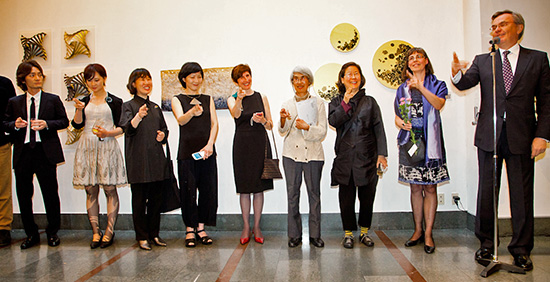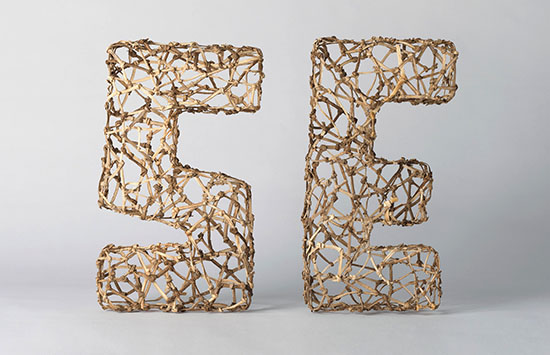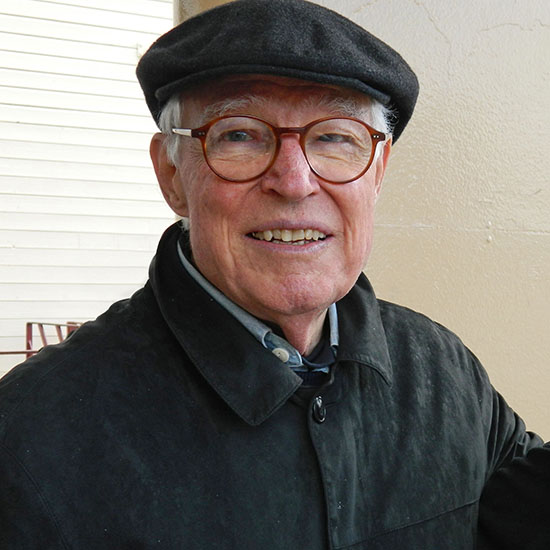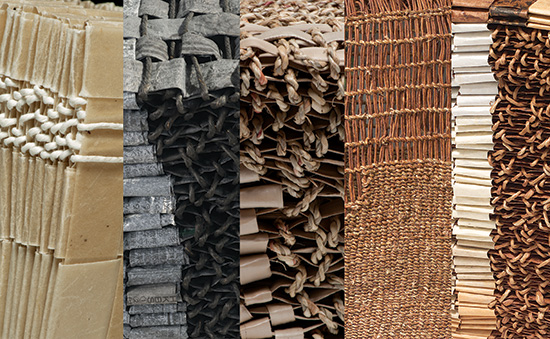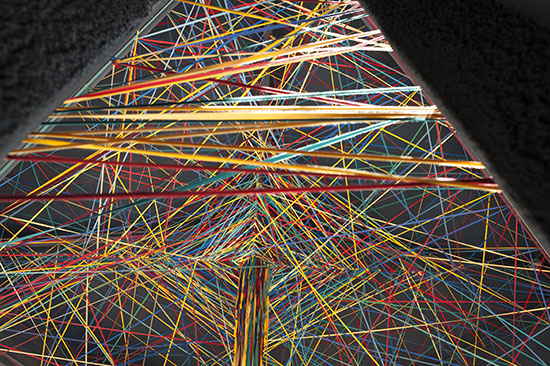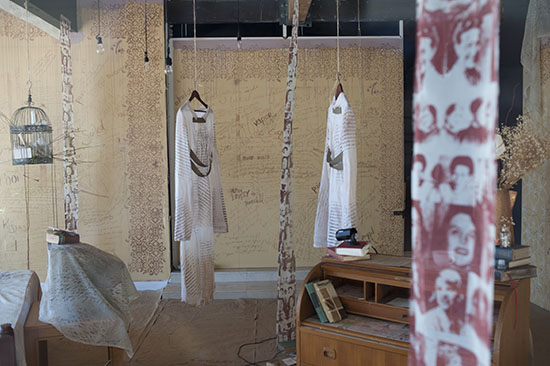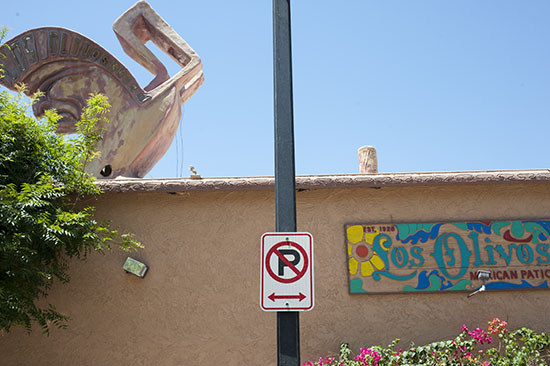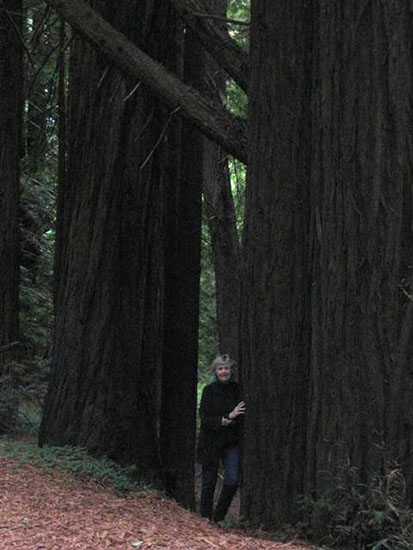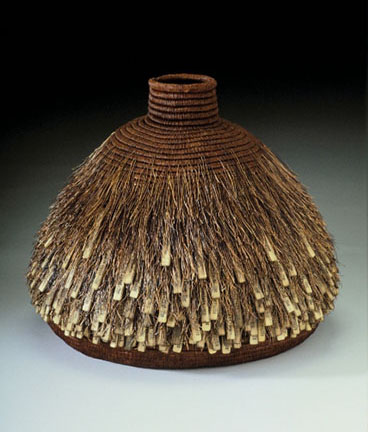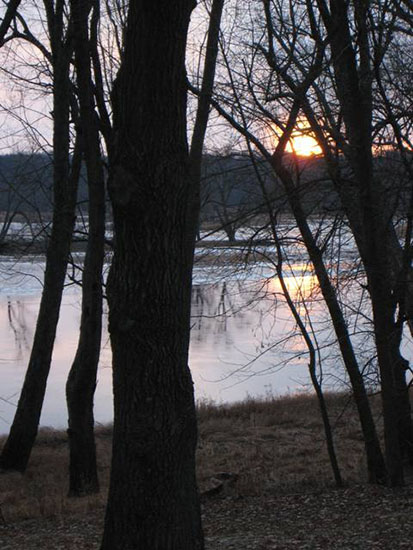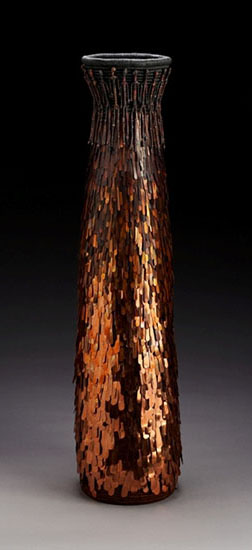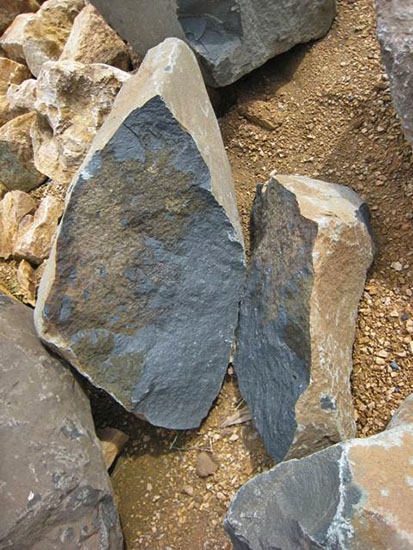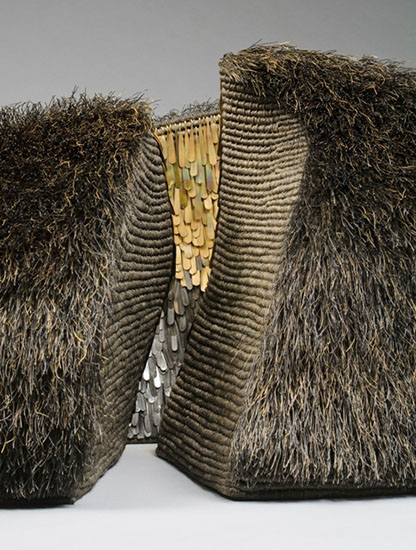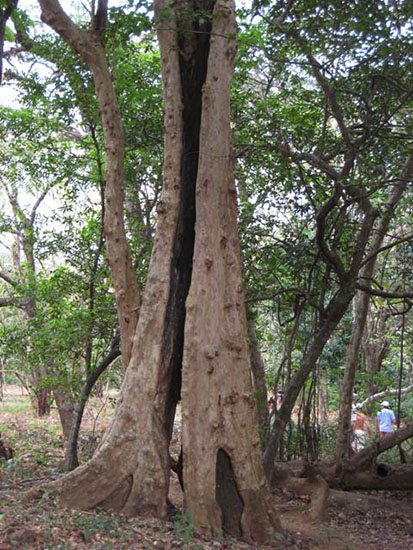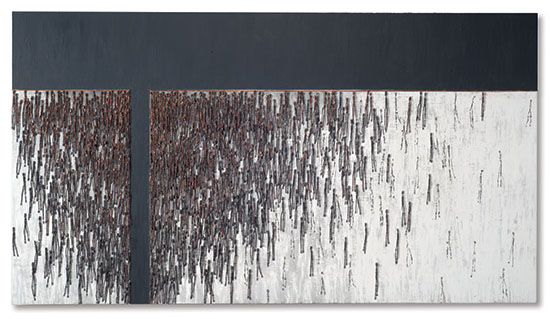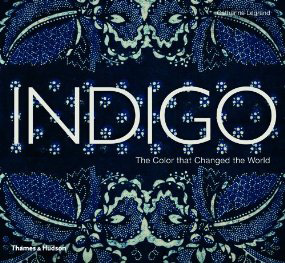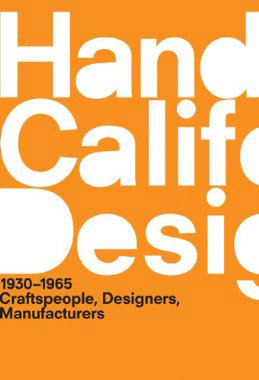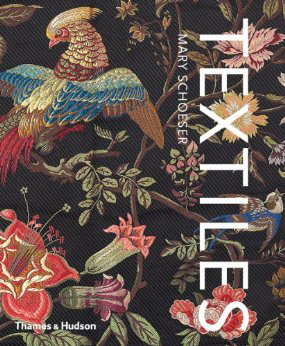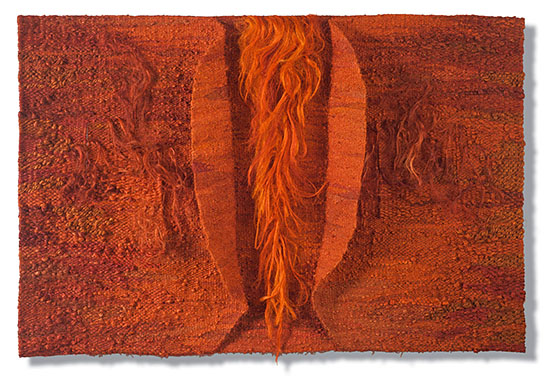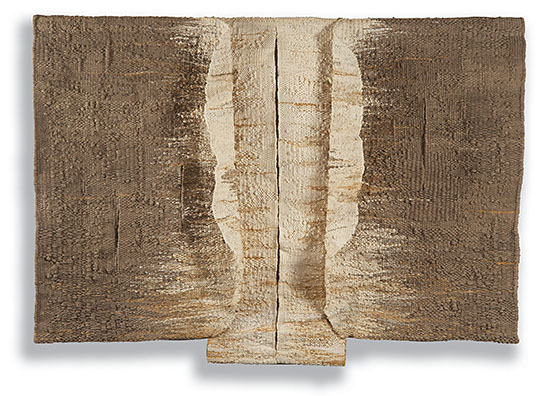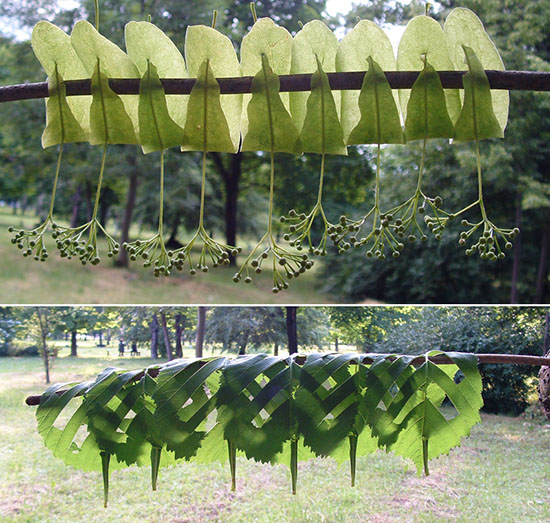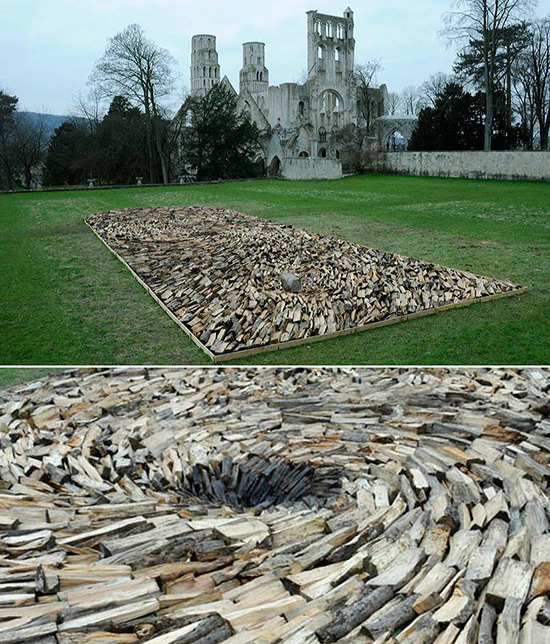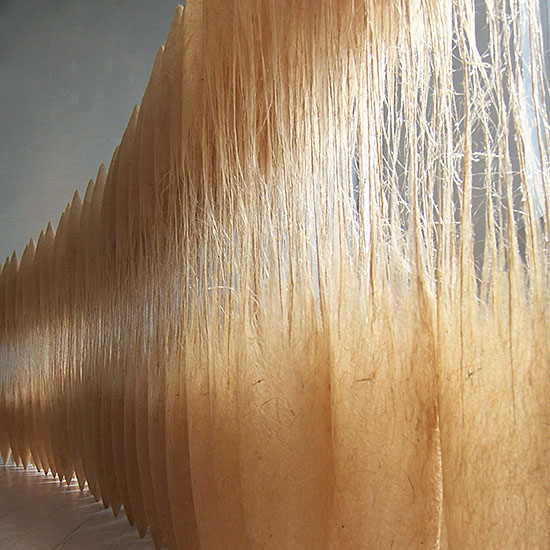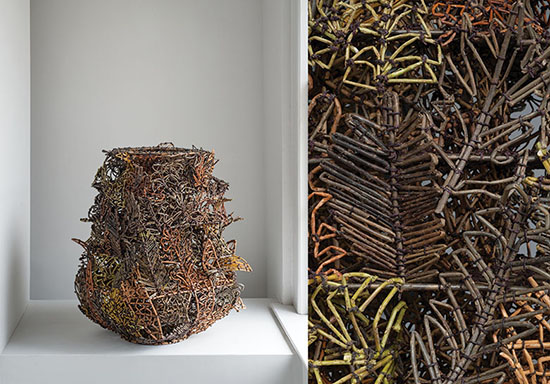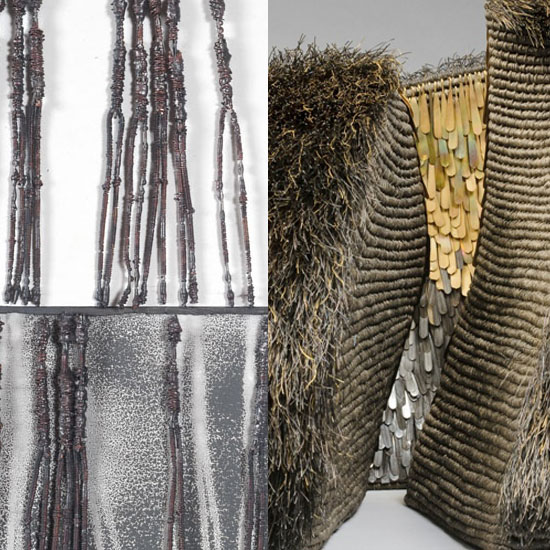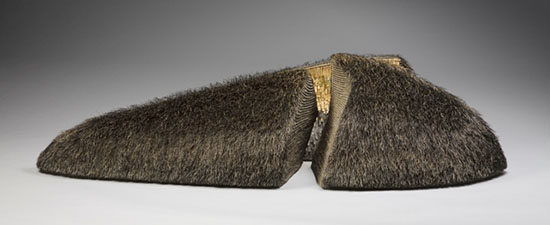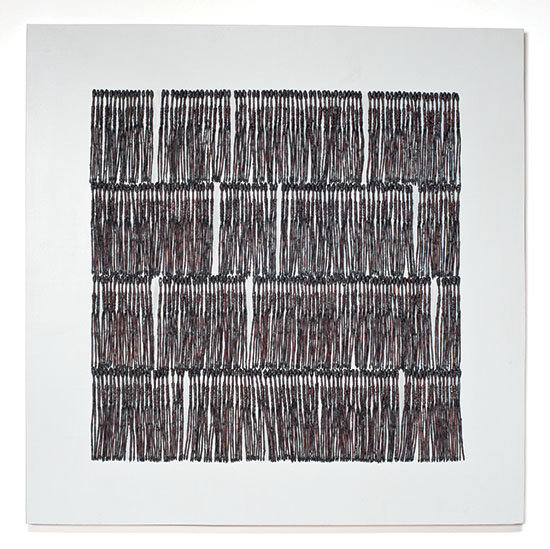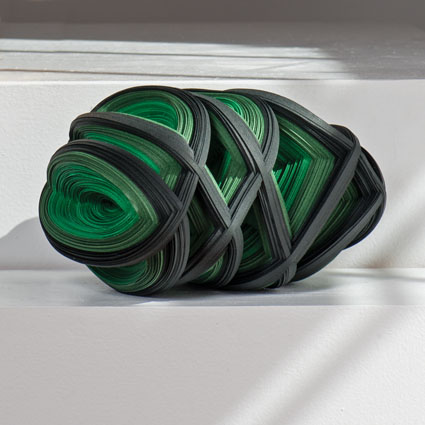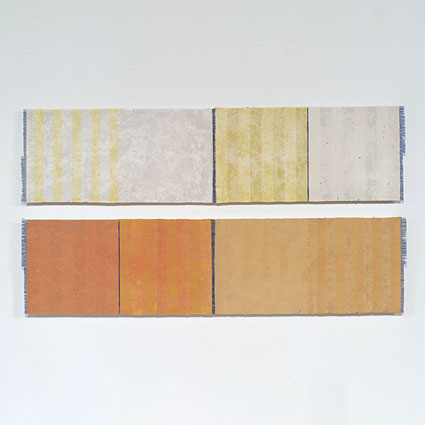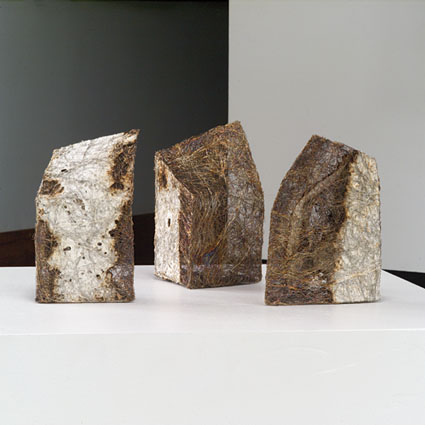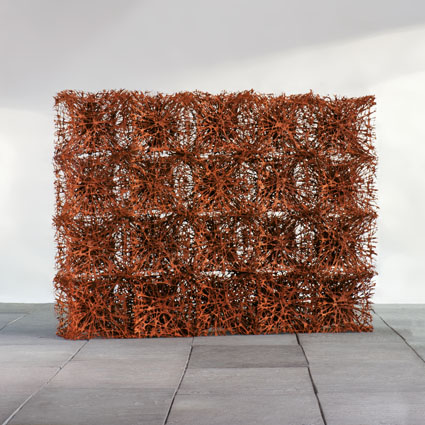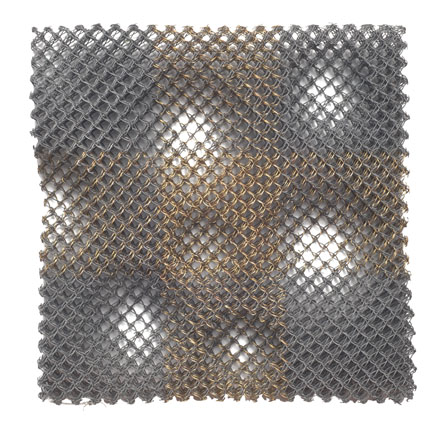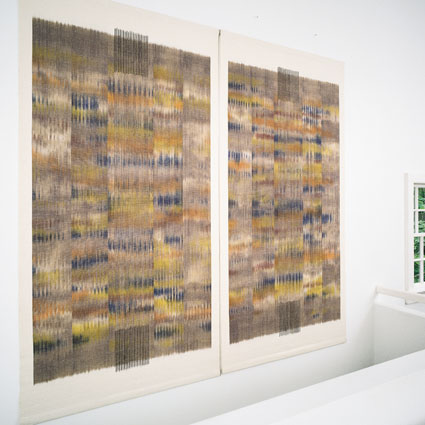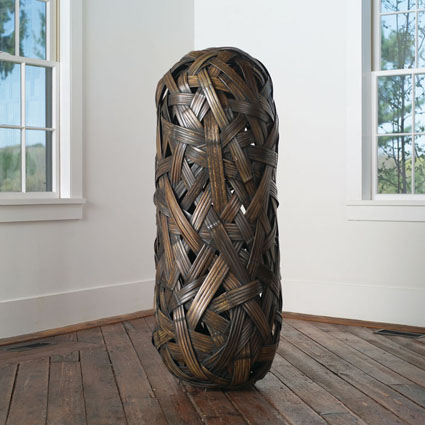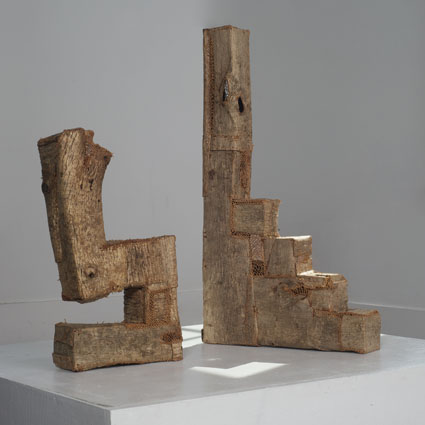Earlier this year, the Embassy of Sweden in Tokyo presented Artfully Connected, a look at Sweden through the eyes of an exciting group of artists from Japan, Korea, Sweden and the US, curated by artist
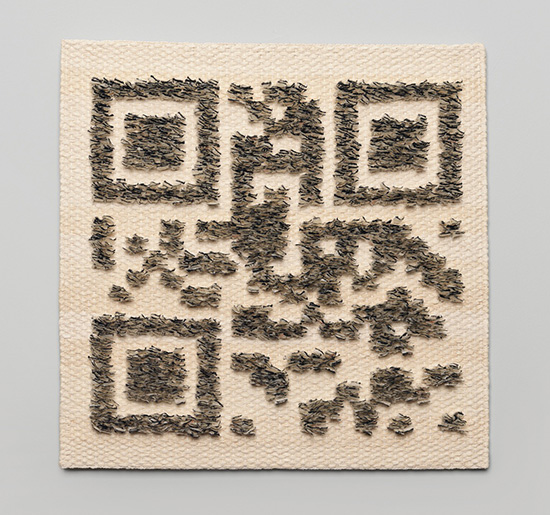
Eva Vargö, Download me (photo: Eric Micotto)
Korean paper cord, Korean old book paper, Japanese ink
48 x 48 cm, 2012
Eva Vargö. The artists who participated were: Young Soon CHA, Korea (Fiber),
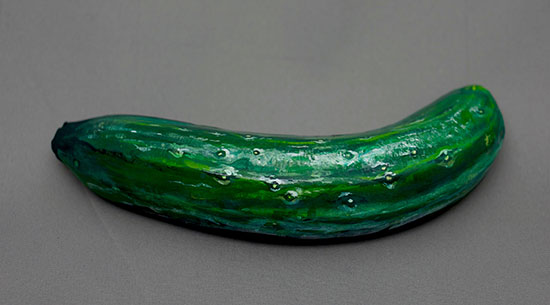
CHO Hikaru, Every thing is not what it seems, Acrylic painting (Photo: Hikaru Cho), 60 × 42 cm, 2013
Hikaru CHO, Japan (Photos and videos), Miwha OH, Korea (Metalsmith – Jewelry), Hisako SEKIJIMA, Japan (Basketmaker),
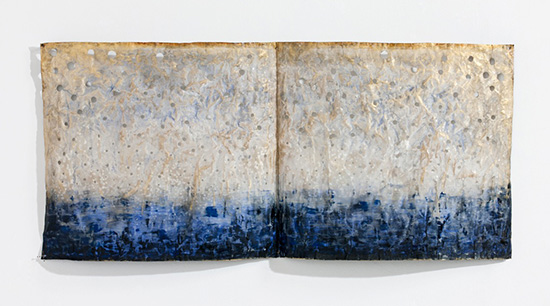
Jin-Sook So, View the Storsjön (Photo: Pack Myung Re)
Steel mesh, electroplated silver, gold painted acrylic color, 90 x 42 x 9 cm, 2012
Jin-Sook SO, Sweden/Korea (Paintings on steel mesh), Naoki TAKEYAMA, Japan (Enamelled works on copper), Eva VARGÖ, Sweden(Paper weaving and paper Objects),
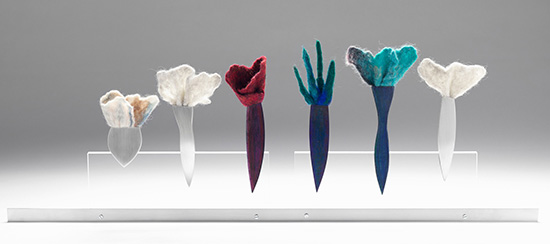
Lisa Vershbow, Corsages (photo: Eric Micotto) six brooches on a stand, Silver, Copper with color pencil patina and wet-felted wool, Installation – 21 x 67 x 3 cm, (each brooch approx. 14 x 3 x 1 cm), 2013
Lisa VERSHBOW, USA (Metalsmith – jewelry). Click the links on each name and you can read a brief “story” about the artists and the influence Sweden had on their works.
Hisako Sekijima, for example, describes the map of Sweden she found on the internet as influencing, SE, the basket she created for the exhibition. Hikaru Cho’s Every Thing Is Not As it Seems speaks to discrimination.”We always bear prejudice and a sense of discrimination somewhere inside,” says the artist in her story. “Often, we don’t even notice it. I have experienced it many times while living in Japan with Chinese nationality. People differentiate the own ethnic group from others in order to strengthen the solidarity.” You can read more about Cho, in the Asahi Shimbun article, “Japan-born artist turns her eye to discrimination,” by Louis Templado, June 14, 2013, http://ajw.asahi.com/. The Embassy also teamed up with well-known Swedish cameramaker Hasselblad to create a behind-the-scenes video, filmed by Eric Micotto, that you can view here: http://vimeo.com/65644600.

